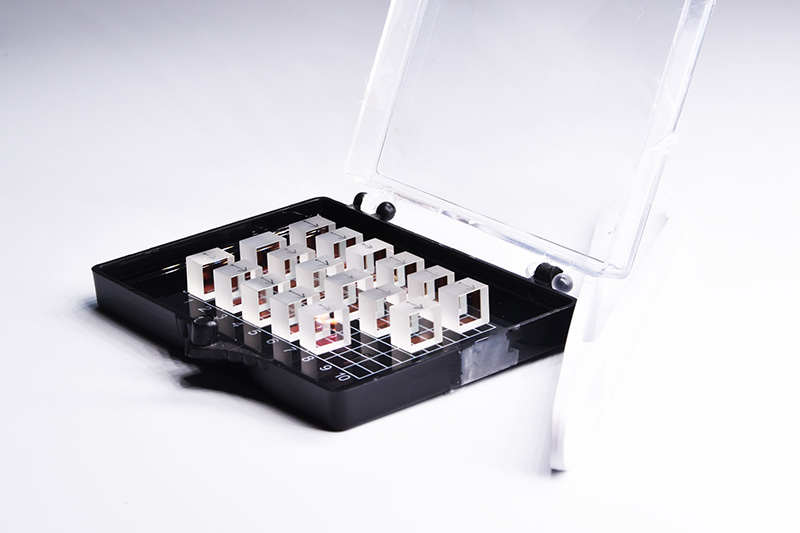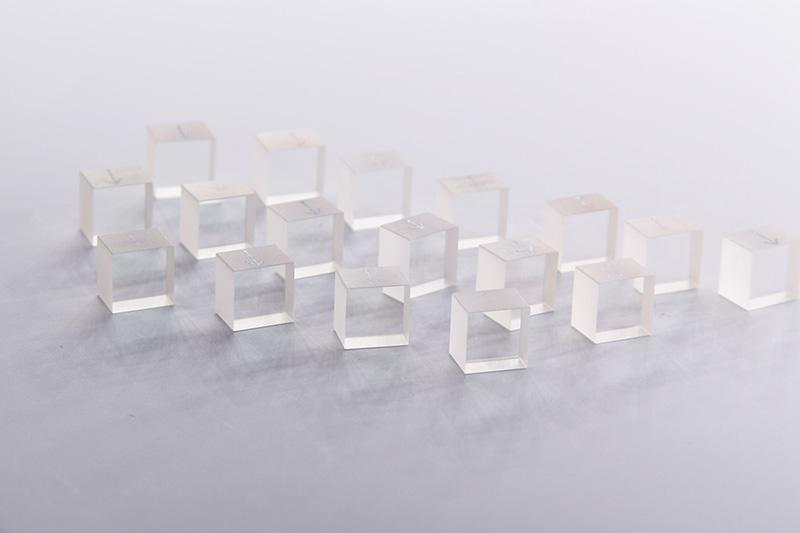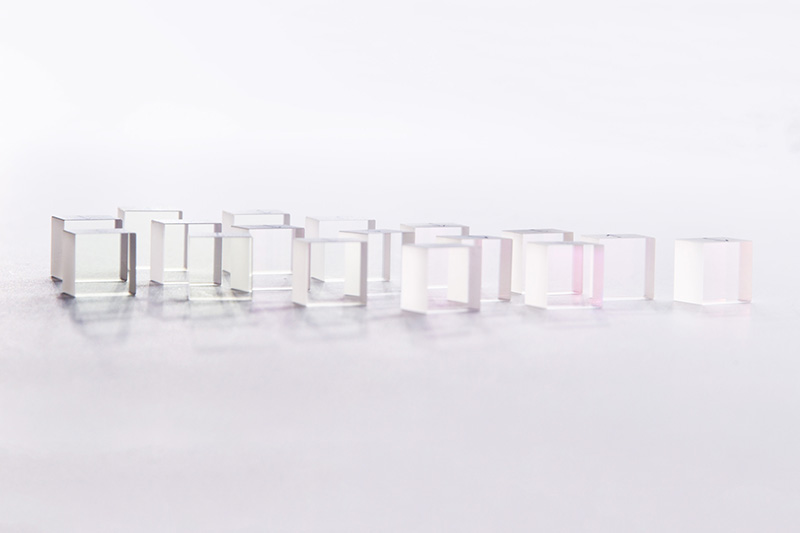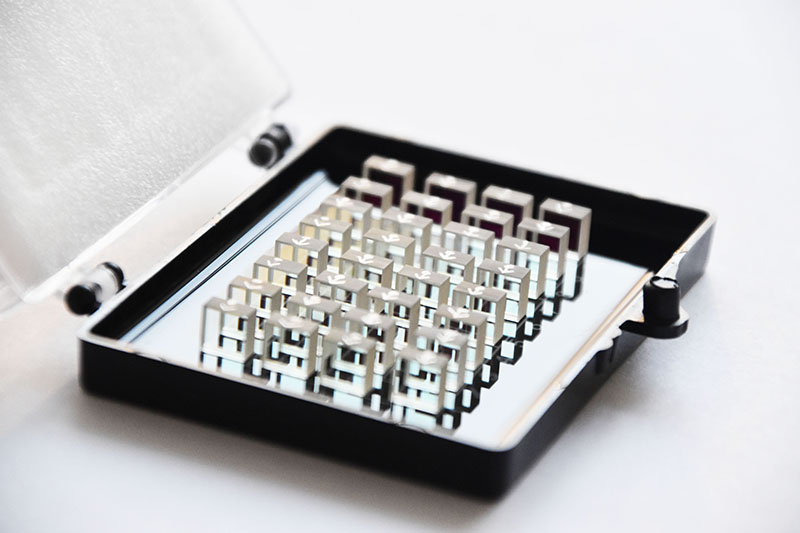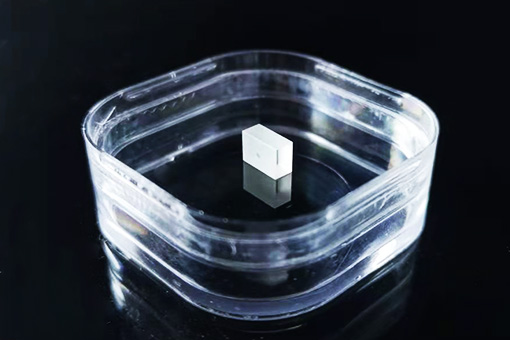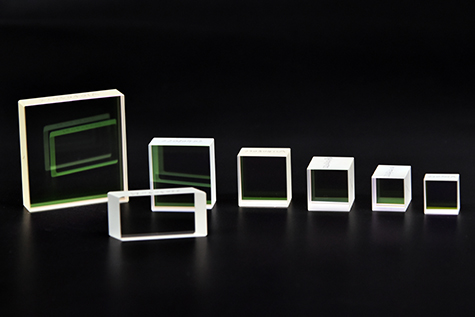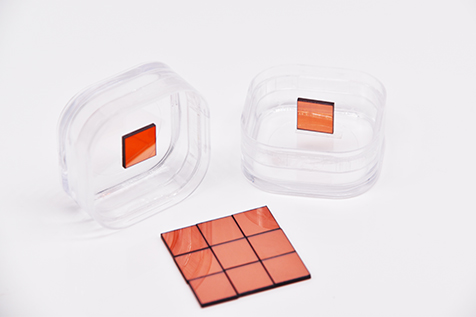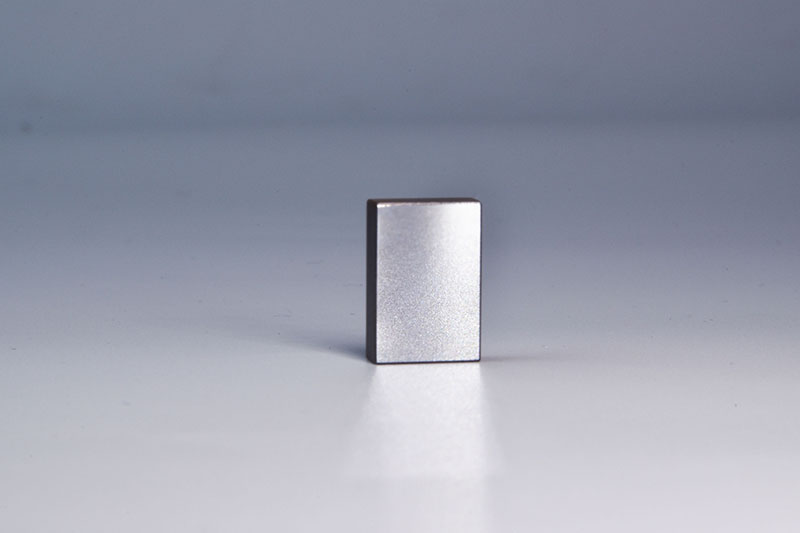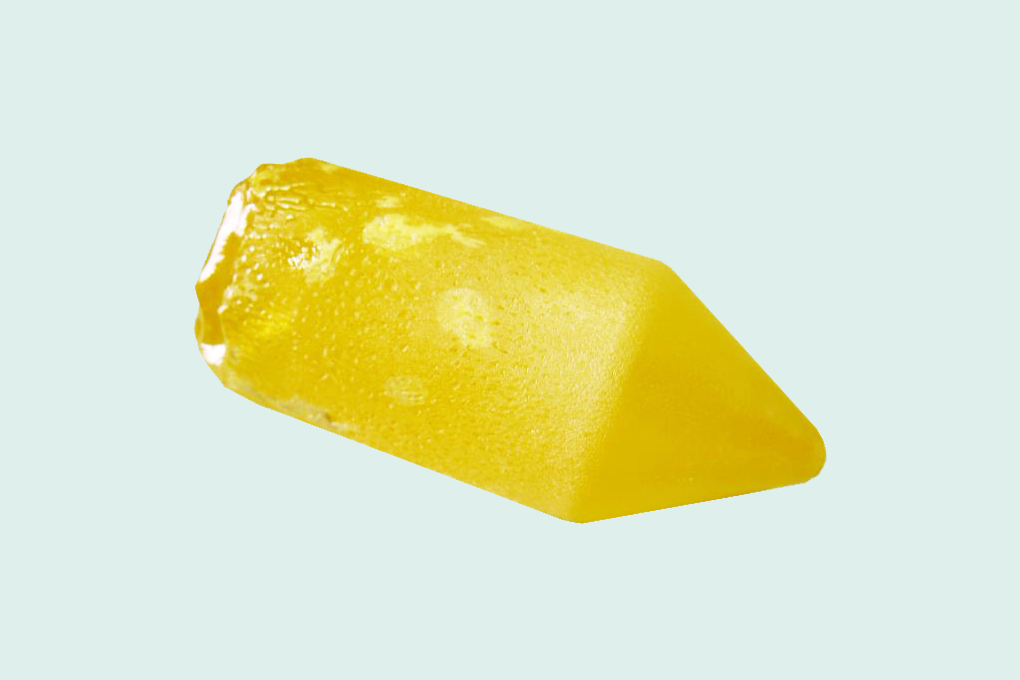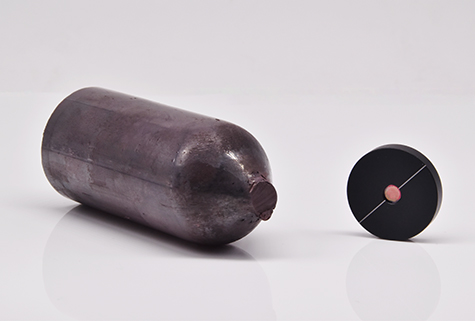KTP Crystal
Potassium Titanyl Phosphate (KTiOPO4 or KTP) KTP is the most commonly used material for frequency doubling of Nd:YAG and other Nd-doped lasers, particularly when the power density is at a low or medium level. To date, extra and intra-cavity frequency doubled Nd:lasers using KTP have become a preferred pumping source for visible dye lasers and tunable Ti:Sapphire lasers as well as their amplifiers. They are also useful green sources for many research and industry applications.
KTP is also being used for intracavity mixing of 0.81µm diode and 1.064µm Nd:YAG laser to generate blue light and intracavity SHG of Nd:YAG or Nd:YAP lasers at 1.3µm to produce red light.
In addition to unique NLO features, KTP also has promising E-O and dielectric properties that are comparable to LiNbO3. These advantaged properties make KTP extremely useful to various E-O devices.
KTP is expected to replace LiNbO3 crystal in the considerable volume application of E-O modulators, when other merits of KTP are combined into account, such as high damage threshold, wide optical bandwidth (>15GHZ), thermal and mechanical stability, and low loss, etc.
Main Features of KTP Crystals:
● Efficient frequency conversion(1064nm SHG conversion efficiency is about 80%)
● Large nonlinear optical coefficients(15 times that of KDP)
● Wide angular bandwidth and small walk-off angle
● Broad temperature and spectral bandwidth
● High thermal conductivity (2 times that of BNN crystal )
Applications:
● Frequency Doubling (SHG) of Nd-doped Lasers for Green/Red Output
● Frequency Mixing (SFM) of Nd Laser and Diode Laser for Blue Output
● Parametric Sources (OPG, OPA and OPO) for 0.6mm-4.5mm Tunable Output
● Electrical Optical(E-O) Modulators, Optical Switches, and Directional Couplers
● Optical Waveguides for Integrated NLO and E-O Devices a=6.404Å, b=10.615Å, c=12.814Å, Z=8
| Basic Properties of KTP | |
| Crystal structure | Orthorhombic |
| Melting point | 1172°C |
| Curie Point | 936°C |
| Lattice parameters | a=6.404Å, b=10.615Å, c=12.814Å, Z=8 |
| Temperature of decomposition | ~1150°C |
| Transition temperature | 936°C |
| Mohs hardness | »5 |
| Density | 2.945 g/cm3 |
| Color | colorless |
| Hygroscopic Susceptibility | No |
| Specific heat | 0.1737 cal/g.°C |
| Thermal conductivity | 0.13 W/cm/°C |
| Electrical conductivity | 3.5×10-8 s/cm (c-axis, 22°C, 1KHz) |
| Thermal expansion coefficients | a1 = 11 x 10-6 °C-1 a2 = 9 x 10-6 °C-1 a3 = 0.6 x 10-6 °C-1 |
| Thermal conductivity coefficients | k1 = 2.0 x 10-2 W/cm °C k2 = 3.0 x 10-2 W/cm °C k3 = 3.3 x 10-2 W/cm °C |
| Transmitting range | 350nm ~ 4500nm |
| Phase Matching Range | 984nm ~ 3400nm |
| Absorption coefficients | a < 1%/cm @1064nm and 532nm |
| Nonlinear Properties | |
| Phase matching range | 497nm – 3300 nm |
| Nonlinear coefficients (@ 10-64nm) |
d31=2.54pm/V, d31=4.35pm/V, d31=16.9pm/V d24=3.64pm/V, d15=1.91pm/V at 1.064 mm |
| Effective nonlinear optical coefficients | deff(II)≈ (d24 – d15)sin2qsin2j – (d15sin2j + d24cos2j)sinq |
| Type II SHG of 1064nm Laser | |
| Phase matching angle | q=90°, f=23.2° |
| Effective nonlinear optical coefficients | deff » 8.3 x d36(KDP) |
| Angular acceptance | Dθ= 75 mrad Dφ= 18 mrad |
| Temperature acceptance | 25°C.cm |
| Spectral acceptance | 5.6 Åcm |
| Walk-off angle | 1 mrad |
| Optical damage threshold | 1.5-2.0MW/cm2 |
Products categories
-

Phone
Phone
-

Email
Email
-

whatsapp
whatsapp
-

Wechat
Wechat

-

Top

